Give traditional deviled eggs a fun twist and try these deviled quail eggs for the perfect bite-sized holiday appetizer.
Deviled eggs are hard-boiled eggs, cut in half and filled with hard-boiled yolk mixed with other ingredients.
The most traditional recipes always include at least two of those key ingredients: mayonnaise, mustard, anchovies, pickle relish, paprika, and bacon.
Deviled eggs are a super popular holiday appetizer, but not only in the United States and the United Kingdom.
In France, they are called œuf mimosa, - of course, french makes things sound always more romantic!
In Sweden, the deviled egg is a traditional dish on the Easter Smörgåsbord, where the yolk is mixed with caviar, sour cream, optionally chopped red onion, and decorated with chives or dill and a piece of anchovy.
You can really get creative with this recipe, your favourite ingredients and seasonings give you endless possibilities! So if you're looking for something different, check out these pretty fabulous deviled egg variations.
I personally love to make deviled quail eggs over classic eggs.
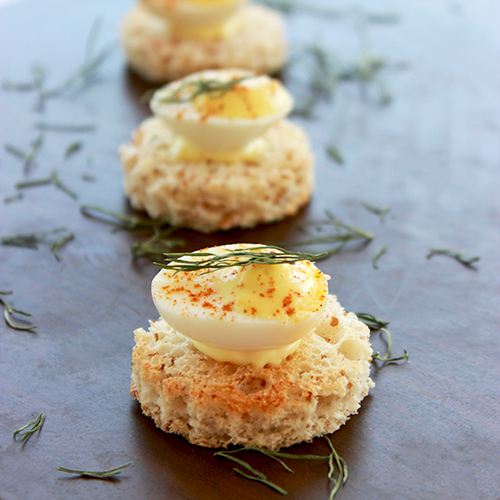
This bite-sized version delivers plenty of flavour into a cute small packaging, making them such a fantastic option for an Easter party, Christmas party or any special occasion.
DIFFERENCE BETWEEN CHICKEN EGGS AND QUAIL EGGS
There's no much difference between quail eggs and chicken eggs except for the size. An average medium chicken egg weighs about 50 grams, a quail egg is tiny and weighs about 9 grams. And in case you're wondering, quail eggs are easy to find in most supermarkets these days and even in online supermarkets.
DEVILED QUAIL EGGS RECIPE
I like to keep my deviled eggs basic, so I use simple ingredients such as sour cream, Dijon mustard, mayonnaise and smoked paprika.
As an added bonus, I like to toast a few slices of grain and seed bread,cut them into small rounds using a cookie cutter and place them under the prepared eggs. It reminds me of tapas or bruschetta with an elegant twist.
If you are a fan of crispy bacon or pancetta,( and I would say Parma ham also!), you can of course add some.
I made these Deviled Quail Eggs recently for my birthday party and they disappeared within seconds! So, make a huge batch of these festive and delicious bites!
MORE FAVOURITE EASTER RECIPES
- Prawn Linguine - Authentic Italian Recipe
- Traditional Bolognese Sauce (Ragu' alla Bolognese)
- Easy Shakshuka with Chickpeas
- Easy Cottage Pie
- Easter Egg Fruit Tart
- Easy Carrot Cake with Orange Mascarpone Cream
DID YOU MAKE THIS RECIPE?
Please let me know how you liked it! Leave a comment and/or a rating below, and share a picture and tag @thepetitecook on Instagram! Reading your feedback and looking at your pictures always makes me smile *and super hungry*!
Recipe
Deviled Quail Eggs
Ingredients
- 6 quail eggs
- 3 tablespoon mayonnaise
- 1 tablespoon sour cream
- ½ teaspoon Dijon Mustard
- ⅛ teaspoon smoked paprika
- sea salt & black pepper to taste
- dill sprigs, for garnish
- 12 bread slices ( I use grain and seed bread), or use 6 if you cut 2 rounds from each slice
Instructions
- Place the eggs in a pot filled with cold water, cover with a lid and bring to a boil.
- Turn the heat off and let the eggs sit for 2 mins.
- Drain them and cool under cold running water, then carefully peel them.
- Cut each egg in half. Carefully scoop all the egg yolks out and place them in a bowl. Line the egg whites on a servind board, ready to be filled.
- In the bowl with the egg yolks, add in the mayonnaise, sour cream, mustard, paprika, salt and pepper to taste. Stir until well combined.
- Transfer the mixture into a piping bag and fill each quail egg. Refrigerate until ready to serve.
- With the help of a cookie cutter, cut the bread into rounds. Heat a skillet and toast the bread rounds until crisp on both sides.
- Spread a little of extra mayonnaise on top of each bread slice. Top with the quail eggs, sprinkle with extra paprika and dill, and serve immediately.
Notes
Nutrition
The information shown is an estimate provided by an online nutrition calculator. It should not be considered a substitute for a professional nutritionist’s advice.
This post was published in April 2014 and updated with more info.


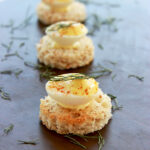
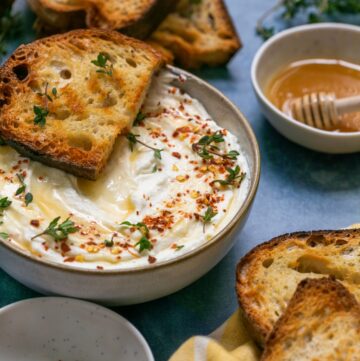
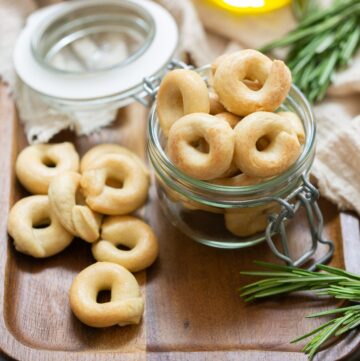
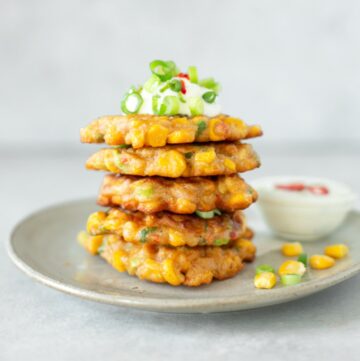
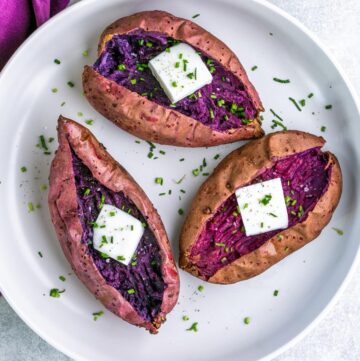
Pamela David says
Loved checking time (2imutes) as had forgotten! Thanks.